Results
-
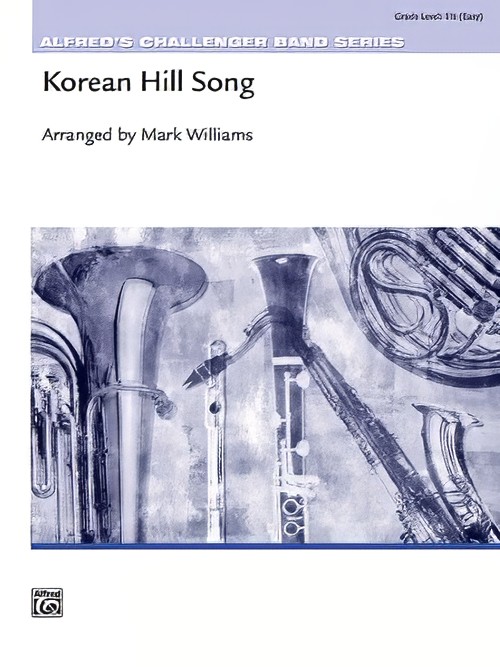 £48.95
£48.95Korean Hill Song (Concert Band - Score and Parts) - Williams, Mark
The beautiful, well-known folk song "Arirang" is featured in this creative adaptation by Mark Williams. Colourful percussion writing and solos for alto saxophone and flute help to establish the tone of this very interesting arrangement. John Barnes Chance also used this folk song, named for Arirang Hill, near Seoul, in the concert band classic Variation on a Korean Folk Song. Take advantage of this great opportunity for younger musicians to experience this amazing melody! Duration: 2.30
Estimated dispatch 7-14 working days
-
 £49.95
£49.95Cedar Valley March (Concert Band - Score and Parts) - Hodges, Steve
This spirited march begins with a dynamic "echo" introduction that leads to the memorable main theme. All sections share the spotlight before transitioning into the contrasting B section with a minor, more lyrical theme. After an understated presentation, this section builds to a big cymbal crash that leads to a repeat of the A section. The coda features a variation of the echo introduction before ending in a dynamic fashion. The vitality of this work makes Cedar Valley March an ideal concert opener that both the band and audience will enjoy. Duration: 3.30
Estimated dispatch 7-14 working days
-
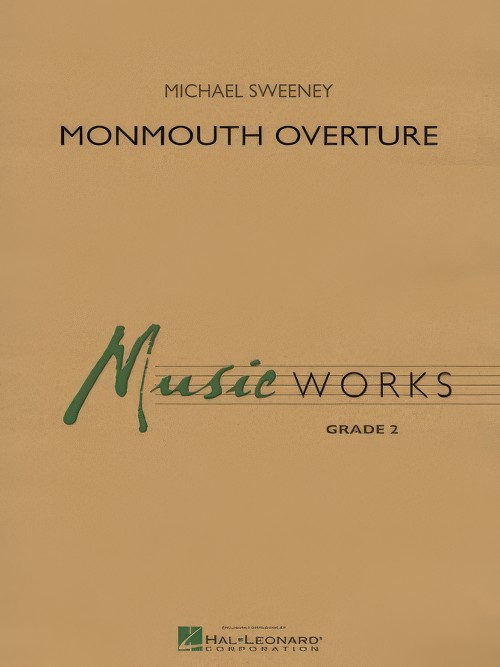 £53.50
£53.50Monmouth Overture (Concert Band - Score and Parts) - Sweeney, Michael
Written to depict the small town life and scenic beauty of a New England village, Monmouth Overture features a single reoccurring theme that winds its way throughout this composition in a modified theme and variation form. A musical rewarding work for younger players, it once again demonstrates Michael Sweeney's command of the young band idiom. Recorder parts are optional.
Estimated dispatch 7-14 working days
-
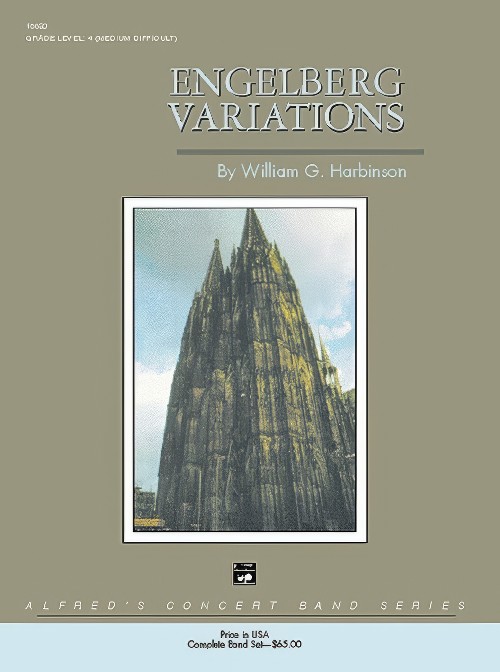 £62.95
£62.95Engelberg Variations (Concert Band - Score and Parts) - Harbinson, William G.
Engelberg Variations was composed for the Hibriten High School Band in Lenoir, North Carolina and is based on the hymn, "When In Our Music God Is Glorified." It opens with a flourish of activity from the brass and percussion. This gives way to the statement of the theme set in a lovely woodwind chorale featuring flutes and oboes. A lyrical trumpet solo takes the band to a soaring tutti statement of the theme which gets interrupted by a percussion-filled staccato variation. Fragments of the theme are then heard in fun variations juxtaposed against the original theme in augmentation. Engelberg Variations is destined to become a classic! Duration: 6.45
Estimated dispatch 7-14 working days
-
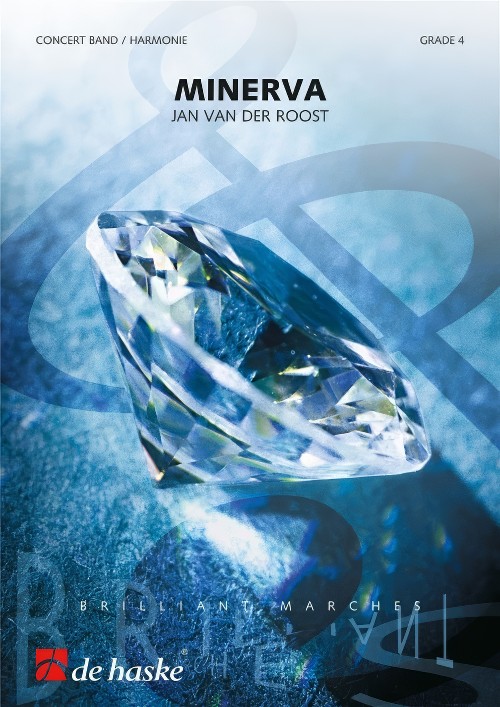 £89.99
£89.99Minerva (Concert Band - Score and Parts) - Van der Roost, Jan
Minerva by Jan Van der Roost was composed on the commission of the German "Musikverein Braunshausen" on the occasion of the 75th anniversary of the orchestra. The composition, first performed on September 17, 1999, is not a street march but a concert march, just like Mercury and Arsenal. The use and variation of different rhythmic patterns gives the first part of this march a distinctly dynamic character. Two main themes are presented in several instrumental combinations. The theme from the trio, on the other hand, is characterized by a broad melodic approach using large intervals. This theme, wreathed by high woodwinds, is heard one more time after a contrasting new part, but now in a somewhat slower tempo. The counterpoint in this part refers to the first part of the march. The brilliant ending suits a festive anniversary march!Duration: 4:00
Estimated dispatch 7-14 working days
-
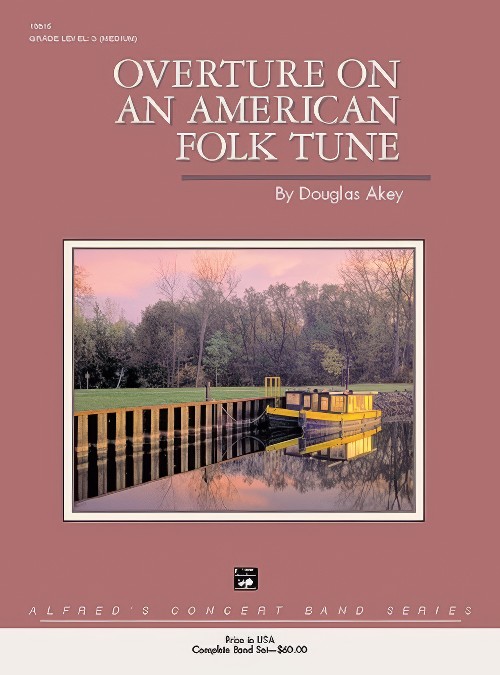 £58.50
£58.50Overture on an American Folk Tune (Concert Band - Score and Parts) - Akey, Douglas
This incredible overture was written for the All County Honor Band in Mercer County, Pennsylvania and is based on the familiar folk song, "Erie Canal." The slow, powerful introduction is comprised of fragments of the famous melody. The tempo then suddenly increases, yielding a driving, staccato variation featuring trumpets and percussion. After giving way to a mysterious section played by flutes and low brass, the "Allegro" reappears in an exciting contrapuntal form. Douglas Akey's Overture on an American Folk Tune is destined to become a classic! Duration: 4.45
Estimated dispatch 7-14 working days
-
 £164.95
£164.95Euphonium Concerto (Concert Band - Score and Parts) - Ellerby, Martin
This Euphonium Concerto was written between late 1994 and early 1995 in response to a commission from Steven Mead to whom the work is dedicated. It is cast in four movements and lasts a little over 22 mins:I. Fantasy: After the briefest of introductions, the solo euphonium enters with the key melodic phrase of the movement in a fast 'Tempo I'. This idea is developed up to the point where a slower 'Tempo II' breaks the argument - here the mood is reflective but it is only to be a brief interruption as 'Tempo I' returns very quickly. The opening material is then subjected to further transformation with 'Tempo II' making occasional returns en route, the distances between the contrasting tempi becoming ever closer, and the movement closes in a rather soft though definite manner.II. Capriccio: This relatively short presto movement forms a bridge between the first movement and the work's slow movement. The majority of the band parts are bright and muted with the percussion players enhancing the texture with contributions from xylophone, glockenspiel and vibraphone. Again the initial solo euphonium phrase provides the basis for almost all the movement's material. This is extremely virtuosic for the soloist and band alike and makes great play of the rhythmic possibilities of combining simple and compound music either in close proximity or together.III. Rhapsody (for Luis): A Lento movement, sitting between two different but essentially rapid ones, this provides the work's emotional core exploiting the soloist's cantabile qualities in an almost seamless fashion. Again, as will all the work's movements, the initial idea paves the way for subsequent development, eventually culminating in a passionate climax; thereafter it winds down with an affectionate backward glance towards the close of the the slow movement of the Euphonium Concerto of Joseph Horovitz, whose mark had been made indelibly on the euphonium repertoire. This movement is dedicated to Luis Maldonado who set the full score of the brass version before his untimely death.IV. Diversions: The work's variation finale is cast in 3/4 throughout though the barline is often a guideline and was seen by the composer as a challenge of metrical restraint! There is an obvious jazz feel to this movement (both rhythmically and harmonically) with a swaggering ritornello theme first announced by the solo euphonium. Thereafter follows a series of interludes and 'adjusted' returns of the main theme. A lyrical idea is allowed to enter but the underlying momentum is ever present. The band also contributes to the interludes and eventually the tempo increases towards a 'wild' and absolute conclusion.Duration: 22.30Recorded on QPRM143D Dreamscapes, Royal Northern College of Music Wind Orchestra
Estimated dispatch 7-14 working days
-
 £32.95
£32.95Euphonium Concerto (Concert Band - Score only) - Ellerby, Martin
This Euphonium Concerto was written between late 1994 and early 1995 in response to a commission from Steven Mead to whom the work is dedicated. It is cast in four movements and lasts a little over 22 mins:I. Fantasy: After the briefest of introductions, the solo euphonium enters with the key melodic phrase of the movement in a fast 'Tempo I'. This idea is developed up to the point where a slower 'Tempo II' breaks the argument - here the mood is reflective but it is only to be a brief interruption as 'Tempo I' returns very quickly. The opening material is then subjected to further transformation with 'Tempo II' making occasional returns en route, the distances between the contrasting tempi becoming ever closer, and the movement closes in a rather soft though definite manner.II. Capriccio: This relatively short presto movement forms a bridge between the first movement and the work's slow movement. The majority of the band parts are bright and muted with the percussion players enhancing the texture with contributions from xylophone, glockenspiel and vibraphone. Again the initial solo euphonium phrase provides the basis for almost all the movement's material. This is extremely virtuosic for the soloist and band alike and makes great play of the rhythmic possibilities of combining simple and compound music either in close proximity or together.III. Rhapsody (for Luis): A Lento movement, sitting between two different but essentially rapid ones, this provides the work's emotional core exploiting the soloist's cantabile qualities in an almost seamless fashion. Again, as will all the work's movements, the initial idea paves the way for subsequent development, eventually culminating in a passionate climax; thereafter it winds down with an affectionate backward glance towards the close of the the slow movement of the Euphonium Concerto of Joseph Horovitz, whose mark had been made indelibly on the euphonium repertoire. This movement is dedicated to Luis Maldonado who set the full score of the brass version before his untimely death.IV. Diversions: The work's variation finale is cast in 3/4 throughout though the barline is often a guideline and was seen by the composer as a challenge of metrical restraint! There is an obvious jazz feel to this movement (both rhythmically and harmonically) with a swaggering ritornello theme first announced by the solo euphonium. Thereafter follows a series of interludes and 'adjusted' returns of the main theme. A lyrical idea is allowed to enter but the underlying momentum is ever present. The band also contributes to the interludes and eventually the tempo increases towards a 'wild' and absolute conclusion.Duration: 22.30Recorded on QPRM143D Dreamscapes, Royal Northern College of Music Wind Orchestra
Estimated dispatch 7-14 working days
-
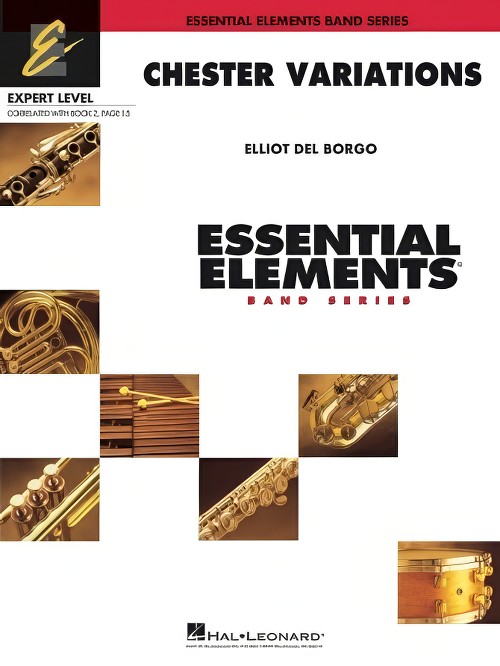 £60.99
£60.99Chester Variations (Concert Band - Score and Parts) - Del Borgo, Elliot
Classic American folk tune with simple variation treatment
Estimated dispatch 7-14 working days
-
 £49.95
£49.95Phil The Fluter (Concert Band - Score and Parts) - French, Percy - Brand, Michael
This lovely tune is arranged to give nearly everyone chance to shine: flute, oboe, trumpet, horns, saxes, tuba and percussion. Each variation is scored with new colours and textures, ending with a chromatic version of which Grainger, Percy might have been proud!
Estimated dispatch 7-14 working days
